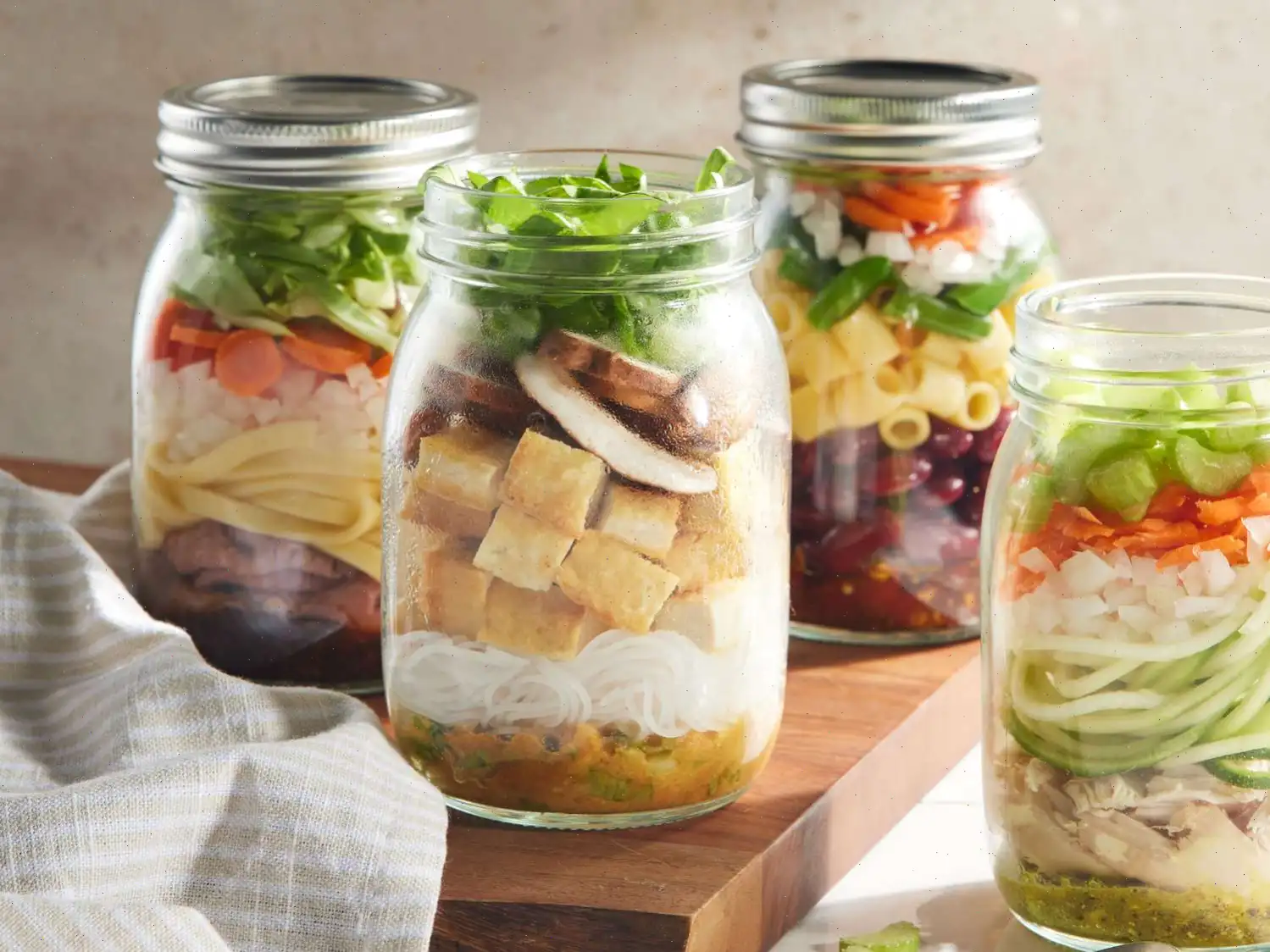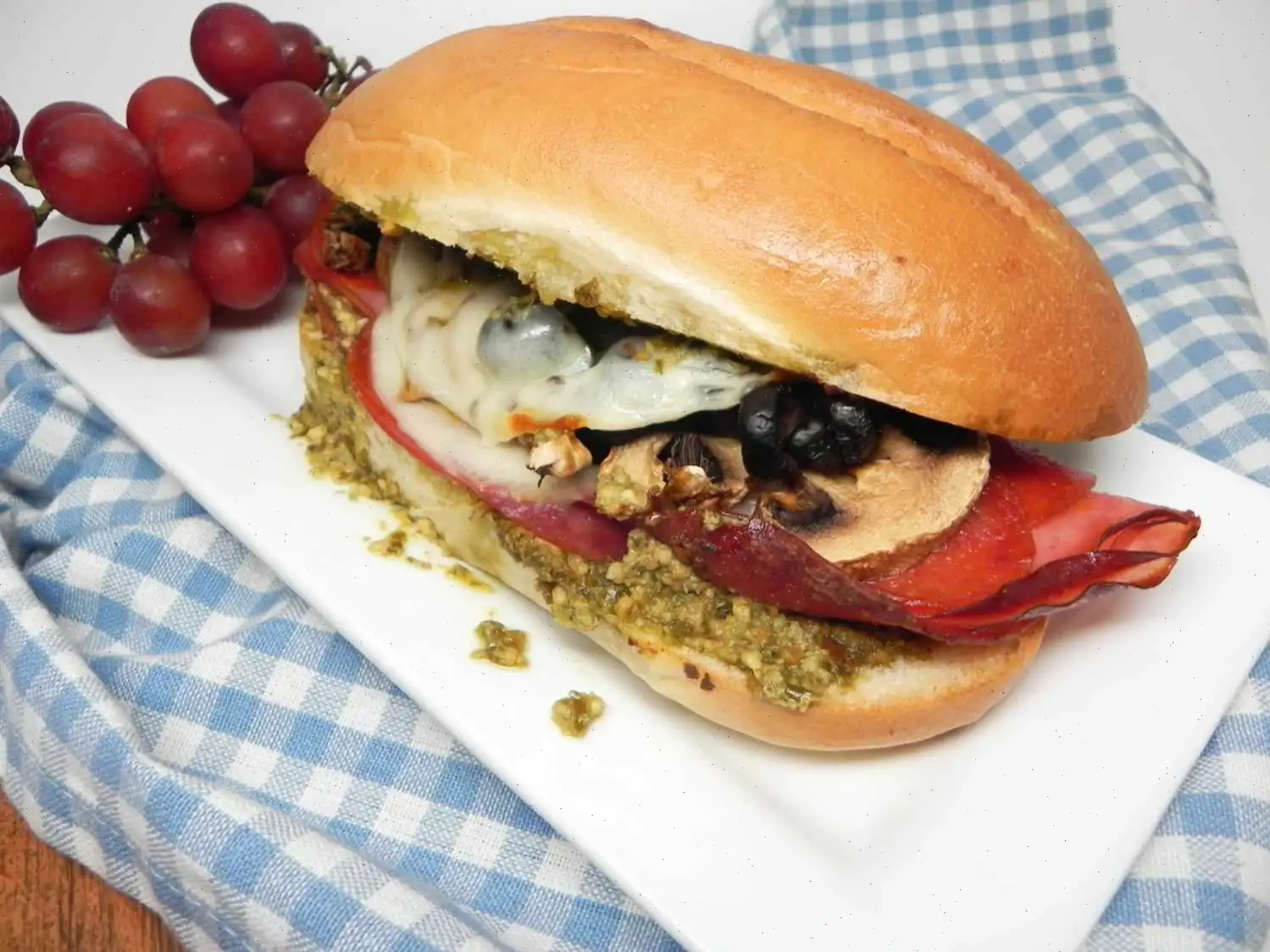
Miso Noodle Soup in a Jar Recipe
Ingredients
This recipe is designed for 3 servings. Ingredient amounts adjust automatically, but cooking steps remain the same. Note that scaling may not be perfect for all recipes.
- 12 ounces extra-firm tofu
- 1 tablespoon vegetable oil
- 1/4 cup sliced green onions
- 3 tablespoons white miso paste
- 2 cloves garlic, minced
- 1 tablespoon vegetable stock base
- 1 tablespoon grated fresh ginger
- 1 1/2 cups cooked rice vermicelli noodles
- 1 cup thinly sliced shiitake mushrooms
- 1 cup thinly sliced baby bok choy
Directions
- Cut the tofu into 1/2-inch planks. Heat vegetable oil in a large skillet over medium-high heat. Cook the tofu for 6 to 8 minutes, turning halfway, until golden brown. Once done, cut tofu into cubes.
- In a small bowl, combine green onions, miso paste, minced garlic, vegetable stock base, and grated ginger.
- Divide this mixture evenly among three microwave-safe pint-size jars with lids. Layer each jar with rice vermicelli noodles, tofu cubes, shiitake mushrooms, and baby bok choy.
- Cover the jars and refrigerate for up to 5 days.
Heat and Serve
- Let the jar sit at room temperature for 10 minutes, or hold it under warm water for 1 minute.
- Add approximately 1 cup of water to fill the jar nearly to the top.
- Microwave the jar without the lid for 3 minutes. Carefully screw on the lid (jar will be hot) and let it sit for 5 minutes.
- Invert the jar gently to mix the ingredients. Serve directly from the jar or transfer to a bowl.
- Optional: Garnish with extra sliced green onions before eating.
Nutrition Facts (per serving)
- Calories: 256
- Total Fat: 12g (15%)
- Saturated Fat: 2g (8%)
- Cholesterol: 0mg (0%)
- Sodium: 697mg (30%)
- Total Carbohydrate: 24g (9%)
- Dietary Fiber: 4g (15%)
- Total Sugars: 3g
- Protein: 17g (33%)
- Vitamin C: 22mg (24%)
- Calcium: 413mg (32%)
- Iron: 4mg (22%)
- Potassium: 578mg (12%)
*Percent Daily Values are based on a 2,000 calorie diet. Individual needs may vary.
Variations
Explore other delicious jar soups such as Minestrone in a Jar, Beef and Cabbage Soup in a Jar, or Chicken Zoodle Soup in a Jar for more convenient, make-ahead meals.

The Story Behind Miso Noodle Soup in a Jar
Miso noodle soup has roots in traditional Japanese cuisine, where miso pastefermented soybean pastehas been used for centuries as a base for soups, sauces, and marinades. The concept of serving it in a jar is a modern twist inspired by contemporary meal-prep trends and social media platforms like TikTok, making this age-old comfort food convenient for busy lifestyles. Traditionally, miso soup was a simple dish enjoyed at home or in restaurants, but the jar format transforms it into a portable, ready-to-heat meal perfect for modern schedules.
Regional Characteristics
While miso soup is a staple across Japan, regional variations reflect local ingredients and tastes. In Hokkaido, richer, darker miso varieties are common, often paired with hearty vegetables and seafood. In Kansai, the soup tends to be lighter, using white miso for a delicate sweetness. The inclusion of ingredients like rice vermicelli, tofu, shiitake mushrooms, and baby bok choy in this jar version draws inspiration from pan-Asian cuisine, blending Japanese flavors with broader Asian culinary influences.
How It Differs from Similar Dishes
Unlike standard miso soup, which is typically served hot in a bowl immediately after preparation, the jar version emphasizes portability and layered ingredients. Compared to ramen or udon soups, which are usually richer and more elaborate with toppings like pork or egg, miso noodle soup in a jar maintains a lighter, vegetarian-friendly profile. Its focus on convenience, combined with carefully layered vegetables and noodles, sets it apart from traditional soups that require immediate consumption.
Where Its Commonly Served
Miso noodle soup in a jar is not typically found in restaurants but is popular as a homemade meal for work lunches, picnics, or meal prep enthusiasts. It is also frequently featured in modern cafes that specialize in grab-and-go meals. The microwave-safe jars allow users to reheat the soup quickly, making it an ideal choice for busy professionals, students, or anyone seeking a convenient yet nutritious meal.
Interesting Facts
- Miso paste, the foundation of this soup, is rich in probiotics and has been linked to digestive health and immune support.
- The soup in a jar trend has grown internationally, inspired by viral recipes emphasizing layered, Instagram-friendly meals.
- This recipe combines traditional Japanese ingredients like miso and tofu with universally popular vegetables, creating a fusion that appeals to a wide audience.
- Microwave-safe jars must be used to prevent cracking, and the lid should never be microwaved directly, making it a unique twist on classic soup preparation.
- The portability of this soup reflects the broader trend toward functional, on-the-go meals without sacrificing nutritional value or flavor.
FAQ about Miso Noodle Soup in a Jar Recipe
Comments
Jennifer Allen
07/18/2024 01:51:19 AM
Everyone thought I spent hours on it.









